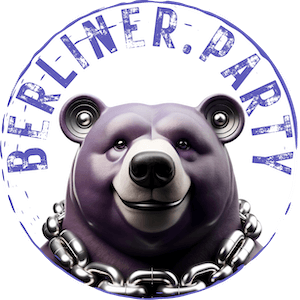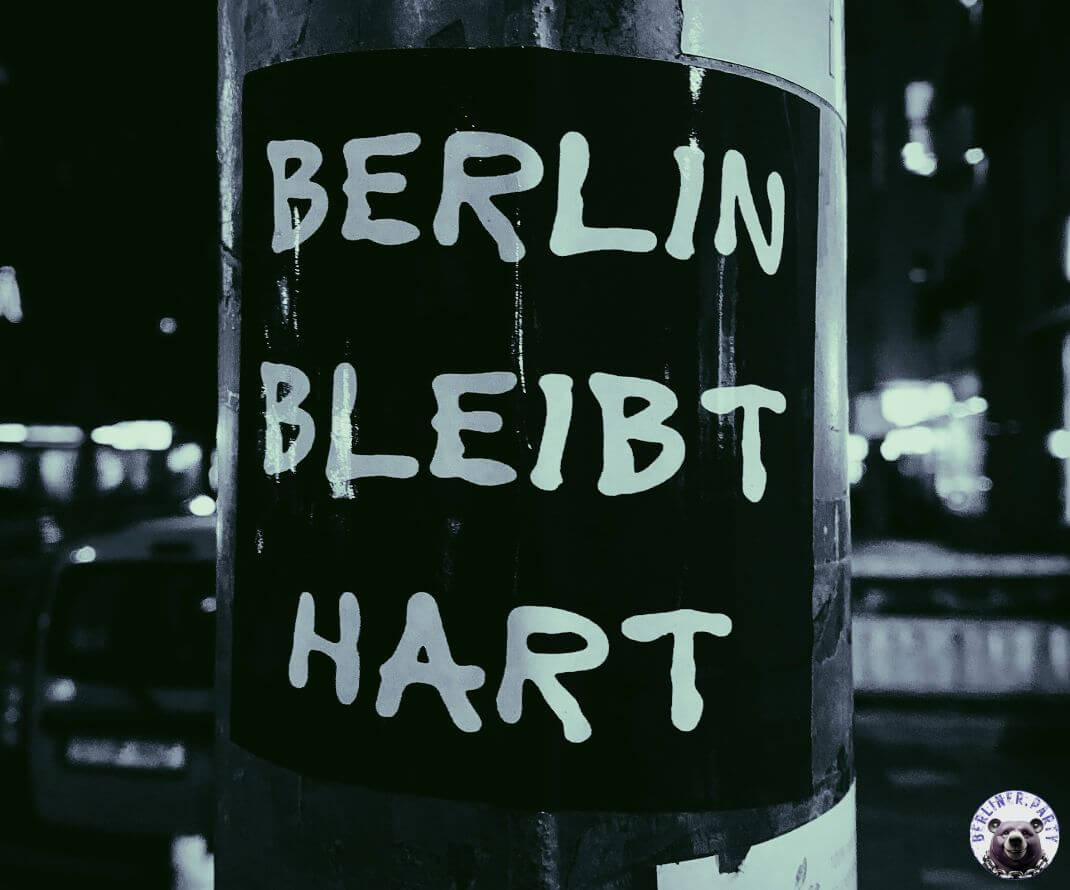Berlin has long been celebrated as a 24/7 party capital – a city where legendary 72-hour techno raves and all-weekend club marathons were the norm. Today, that same vibrant nightlife is undergoing a profound evolution. An emerging trend of sober parties and daytime raves is reshaping Berlin’s club culture, even as traditional all-night events persist. The result is a new fusion of experiences spanning both day and night, as the city’s party scene adapts to changing tastes and challenges.
The Rise of Daytime & Sober Raves
A few years ago, the idea of a booming Berlin dancefloor without alcohol or drugs might have sounded ironic. Now, it’s reality. Sober raves – often scheduled during daylight or early evening – are surging in popularity. For example, at 6 PM on a recent Sunday, a long queue stretched outside Aeden nightclub for the “Sugar Free” edition of Lunchbox Candy, a popular queer party. This was not the tail-end of a three-day bender, but a fully sober event where only alcohol-free drinks were served. Inside, partygoers danced energetically after a guided “meditative dance” warmup, proving that Berliners can achieve euphoria without chemical fuel.
Berlin’s once niche sober-party scene has quickly grown into a movement. In the past few years, numerous events dedicated to alcohol- and drug-free dancing have sprung up. Notable examples include Lemonade Queers, Tendersesh, and Sober Sensation, all offering vibrant dancefloors minus the intoxication. These parties aren’t after-hour gatherings for the last ones standing; they’re intentionally organized raves where attendees might sip on craft kombucha or Club Mate instead of beer, and revel in daylight or early evening settings. Organizers often infuse these events with wellness and mindfulness elements – think yoga-meets-rave sessions and daytime open-air dances in sunlit parks. The focus is on music, movement and human connection, proving that the fun of raving survives without substances. As one observer quipped, sober parties are “challenging the conventional ideas of partying” in Berlin – but far from killing the fun, they’re offering fresh ways to celebrate and connect.
Importantly, nightlife staples haven’t vanished. Traditional late-night clubbing is still very much alive in Berlin – the city hasn’t suddenly gone quiet after dark. Instead, we’re seeing an expansion of the culture. Legendary venues like Berghain, Tresor or Kater Blau continue to draw weekend crowds well into the dawn. What’s new is that a raver’s itinerary might start at a sober morning dance or an afternoon open-air, and then continue to a classic night-time club. Some party brands even offer both modes: Lunchbox Candy, known for its flamboyant, debauched night parties, introduced its sober “Sugar Free” edition to cater to a growing sober-curious crowd. In this way, daytime and nighttime scenes are coexisting and even merging, giving Berliners and visitors more options than ever to get their groove on at any hour.
Changing Habits Among the New Generation
Why are sober and daytime events gaining traction in a city once synonymous with hedonistic excess? A big reason lies in shifting habits of the younger generation. Studies and industry reports have noted that today’s youth – Gen Z in particular – tend to drink far less alcohol than previous generations. Health consciousness, wellness trends, and a desire for meaningful experiences over mindless debauchery have all contributed to this cultural shift. According to Berlin’s Clubcommission, sales of non-alcoholic beer are on the rise and many clubbers now party for “just one day instead of three”. In other words, the marathon party that defined Berlin’s nightlife in the 2000s is becoming a rarer spectacle. Young clubbers often prefer a “quality over quantity” approach – enjoying music and dancing intensely for a night or a day, but then going home to rest, rather than pushing through an entire lost weekend.
Demographics underscore this evolution. The average age of Berlin club-goers is now around 30 and climbing. An entire cohort of would-be ravers essentially missed their coming-of-age on the dancefloor due to the Covid-19 pandemic shutdowns, and by the time clubs reopened they had new priorities. Meanwhile, the newest adults (18–21 year-olds) show less interest in the traditional club scene than generations before. Gen Z revelers often favor outdoor festivals and daytime cultural events over dark, sweaty basements. They also discover music through digital channels (boiler room live streams, TikTok DJs, etc.), so their idea of a great party might differ from the old guard’s. As one commentator noted, nightlife is “undergoing a profound transformation” and clubs need to listen to these younger voices to stay relevant.
Economic Pressures: Falling Bar Sales and Rising Fees
These changing social habits, however, have a flip side for club owners and promoters. Berlin’s clubs have traditionally relied heavily on alcohol sales to turn a profit – after all, a dancing crowd with drinks in hand keeps the business afloat. Now that partygoers are drinking less on average, venues are feeling the squeeze. As the chair of the Clubcommission, Marcel Weber, put it, sobriety is “more than just a trend” and it directly affects club revenue streams. Fewer beers sold means tighter margins for venues that already operate on thin financial ice. Several beloved Berlin clubs that survived the pandemic have since reported financial struggles, citing Gen Z’s low alcohol consumption as one of the factors behind declining income.
At the same time, Berlin’s nightlife industry is grappling with broader economic challenges. The term “Clubsterben” – literally “the death of clubs” – has entered the local vocabulary to describe the wave of venue closures in recent years. A perfect storm of pressures is undermining this proud cultural scene: some clubs never recovered from the pandemic shutdowns; inflation and soaring energy costs have driven up operating expenses; and gentrification has led to sky-high rents, pricing out iconic venues in what was once an affordable, “poor but sexy” city. For example, the famed LGBTQ+ club SchwuZ, founded in 1977, declared insolvency in begining of 2025 despite its historical importance. Sadly on the 1 of November was the last party at SchwuZas the club is also closed now. Even the renowned Renate, part of the 21st-century wave of techno institutions, announced it will shut down due to an unsustainable rent hike.
To survive these headwinds, clubs and party organizers have been forced to adapt their business models. With bar sales per patron shrinking, many venues have hiked entry fees or introduced new charges to make up the shortfall. It’s not uncommon now for a big Saturday night in a top Berlin club to cost €20-35 at the door, whereas a decade ago it might have been under €10. Some clubs are also diversifying what they offer on-site to encourage patrons to spend money in other ways. “With fewer people drinking, clubs need to offer more than just Fritz Cola” an editor quipped, noting that venues might keep ravers around (and spending) by selling food, gourmet coffee, or even ice cream. (Indeed, Berghain famously installed an ice-cream bar, a novelty that paid off when all-day dancers gladly lined up for cones between techno sets.) The idea is that a club can no longer rely on just alcohol and entry fees – it must become a more holistic social space or “cultural hub”, perhaps incorporating art installations, chill-out cafes, or other amenities to enrich the experience (and revenue streams).
Another adaptation has been scheduling shorter, more affordable events, especially on weeknights, to entice crowds who may be price-sensitive. In late 2024 and 2025, a number of Berlin promoters started throwing smaller parties with cover charges as low as €5 on weekday evenings. These budget-friendly raves aim to keep the scene accessible during a cost-of-living crisis, and they seem to be working – even on a random Tuesday or Thursday, one can find a decent crowd dancing in a Berlin club without breaking the bank.
The government and broader community have also taken note of nightlife’s plight. In a symbolic boost, Germany’s federal government recently added Berlin’s techno club culture to its list of Intangible Cultural Heritage – officially recognizing that what happens in those throbbing clubs is as much a part of the country’s cultural fabric as opera houses or museums. Local initiatives like Tag der Clubkultur (Club Culture Day) have sprung up, offering funding and visibility to struggling venues as a reminder that Berlin’s clubs are creative institutions worth saving. These measures don’t pay the rent, but they underscore a crucial point: Berlin’s club scene is something special, and losing it to economic forces would be an immeasurable cultural loss.
Kinky and Proud: Berlin’s Sex-Positive Scene Expands
No survey of Berlin’s nightlife would be complete without acknowledging the city’s renowned kinky party scene, which is not only alive and well, but growing. Berlin has a well-earned reputation as a mecca of sex-positive partying, with numerous dedicated kinky clubsand a whole host of erotic-themed events running on any given weekend. This aspect of nightlife – where dress codes involve leather, latex or nothing at all, and freedom of sexual expression is celebrated – has long been part of the city’s allure. Lately, it’s drawing even more interest, suggesting that as people seek freedom and community, sex-positive parties are providing exactly that in spades.
Several new fetish- and fantasy-oriented events have emerged or grown in the past few years, adding to the already rich tapestry of Berlin’s kink calendar. For example, Klub Verboten, which started in London, set up in Berlin in 2021 and “quickly carved out its place as one of the city’s best kink events” with a strict focus on BDSM fetish culture and consent-focused safety. Another newcomer, Pinky Promise, has made a splash by aiming to make sex-positive nightlife more accessible to the curious. Their parties feature bright, colorful themes (breaking the old “all-black attire” rule of most fetish events) and even include workshops on topics like intimacy and non-monogamy, alongside DJs and dancing. Such approaches are bringing fresh faces into the scene who might have been intimidated before.
What’s striking is how inclusive and creative this scene has become. There are kinky parties now catering to all tastes and comfort levels: from hardcore play nights for experienced BDSM enthusiasts, to more mixed dance-parties where the vibe is erotic and permissive but newcomers won’t feel out of place. Guides to Berlin’s sex-positive parties emphasize the importance of consent and safety, and newcomers are encouraged to read up on etiquette. In short, the city’s party culture of sexual freedom is growing responsibly, ensuring that as it attracts more people, it remains safe and respectful. The popularity of these events underscores a key point: many Berliners (and visitors) love the freedom these parties offer. In a world often full of constraints, the ability to express oneself freely — whether through fetish fashion, kink play, or just dancing naked without judgment — is a major draw. This segment of nightlife is thus booming, adding another pillar to support Berlin’s reputation as Europe’s ultimate party capital.
A telling sign of the times is the rise of UNLEASHED by UNDR. This new techno-oriented kinky party series launched in early 2025 and quickly garnered a huge following. Remarkably, within six months of its debut, Unleashed.Berlin was voted one of Germany’s top kinky parties of the year. Winning “Best Kinky Party 2025” in the Kinky Guide Awards (in the mid-size follower category) was a huge honor for such a young event, and the organizers noted it “feels truly unleashed” to have beaten out parties that have been around for over a decade. It shows that even in the kinky realm, a fresh approach can shake up the scene and that the community is eager for new experiences. The success of UNLEASHED and others like it suggests Berlin’s kinky party scene isn’t saturating; it’s expanding. More people are joining the fun, and more promoters are stepping in to provide imaginative, liberating events. In essence, even as mainstream clubs struggle, the sex-positive underground is providing a vibrant lifeline, ensuring that Berlin never loses its famously permissive, wild edge.
Four-Year Cycle: Renewal on the Horizon?
There’s a saying among Berlin clubbers that the scene renews itself every few years – roughly every four years, the average person’s hardcore partying phase winds down and a new generation steps in to keep the party going. Whether or not four is a magic number, it’s certainly true that nightlife moves in cycles. The past few years have been an exceptionally tumultuous cycle: the pandemic (2020–2021) brought everything to a screeching halt, followed by a shaky restart in 2022–2023, and then the economic and cultural shifts of 2024–2025. Now, as we head into late 2025 and beyond, it feels like Berlin’s nightlife is at a crossroads. We are, in a sense, about four years post-Covid – a potential inflection point. Will there be a grand resurgence, a “renewal” of Berlin’s clubbing energy as a new wave of young hedonists arrives? Or are we facing a slow decline, even a “total collapse,” as some pessimists fear?
If history is any guide, Berlin’s party spirit is far from extinguished. The city has an almost mythic ability to rebound and reinvent its nightlife. After all, this is the city that turned wartime bunkers and abandoned factories into world-famous clubs, that nurtured underground scenes which became global movements. Observers point out that even in recent memory, many Berliners witnessed the closure of countless beloved corner pubs (Kneipen) due to gentrification, yet new bars and clubs kept emerging in other corners of the city. The creative energy finds a way. As one editorial optimistically put it, a cultural history this precious “should not be abandoned to the whims of market forces” – meaning that city officials, investors, and club communities are all motivated to find solutions to keep nightlife alive. There are ongoing talks about measures like rent control for cultural venues, more funding for nightlife, and better urban planning to protect club locations. Such efforts show that even the establishment recognizes the need to save the clubs.
On the ground, the next year or two will be telling. If the “four-year cycle” theory holds, we might soon see a new generation of partygoers flooding in – those who turned 18 or 19 during the pandemic and missed out, now finally tasting freedom in their early twenties. They might be ready to dance till Monday morning just like generations before, injecting fresh life (and money) into the scene. At the same time, the innovations of the pandemic era – open-air raves, live-streamed DJ sets, hybrid club-cultural spaces – could mature into stable fixtures of Berlin’s nightlife. The optimism is cautious but real: already we see creative adaptations (from sober raves to free-entry clubs) that suggest a path forward. In a way, nightlife is finding its new groove, balancing the old and the new.
What’s certain is that giving up is not the Berlin way. The community of club owners, event organizers, DJs, and party lovers is strong and passionate. They’ve been organizing protests, fundraisers, and awareness campaigns to fight for their scene. Even international recognition – like the UNESCO cultural heritage nod – reinforces the pride and determination to keep Berlin as the party capital of Europe. There’s a shared belief that as long as there are people in this city who love music, freedom, and dancing, the beat will go on. It might morph and change tempo, but it won’t stop. As one sober-party enthusiast put it: “Why should we stop having fun?”. In that simple, hopeful question lies the very spirit that has always driven Berlin’s nightlife. Through every challenge, the city finds a way to dance through the darkness and into a new dawn. And now, dawn might be exactly when the party is just getting started.
About Berlin's own Nightlife Ambassador: With speaker ears tuned to the city's heartbeat and a chain symbolizing Berlin's rich techno heritage, Benny is more than just a mascot; he's a symbol of the city's pulsating nightlife. His encyclopedic knowledge of Berlin's clubs, DJs, and legendary parties makes him the ultimate guide for your night out in the city. From the most iconic clubs to hidden gems, Benny's insights ensure that you party like a true Berliner, every time. So, get ready to experience Berlin's nightlife through the eyes of its most vibrant and beloved bear!



